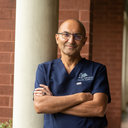Posted underLower Facelift q&a
I have sleep apnea. I am getting a mid facelift and I will have oral sedation - is this OK?
Answers (4)
From board-certified doctors and trusted medical professionals
More Lower Facelift Questions
See all Lower Facelift Q&AWE SEND PRETTY
EMAILS
What’s trending? Who’s turning heads? Which TikTok myths need busting? We’ve got you. No fluff, no gatekeeping—just real talk. Get our free, unfiltered newsletter.

